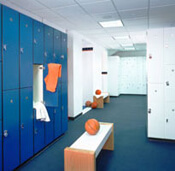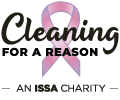Articles
How to Care for Rubber Floors
Categories: Cleaning Best Practices
By Joe Versluis | October 8, 2018 << Back to Articles
Many facilities—especially schools and institutional buildings—are now installing what are termed sustainable hard-surface floor coverings made from bamboo, cork, certified or reclaimed hardwood, or engineered flooring (derived from wood chips and other materials). These properties tend to be large, busy, and multi-use buildings, and it is often difficult to find one type of sustainable floor that meets a facility’s diverse needs. Further, just as with other types of floor coverings, some sustainable floors are more durable, easier to clean and maintain, more slip-resistant, and more visually pleasing than others.
As summer approaches, one sustainable floor type deserves special consideration. Rubber flooring is finding more acceptance and being installed in more facilities, indoors as well as outside. This type of flooring is becoming more popular in schools, institutions, gyms, and pool areas thanks to the way it holds up in all types of situations including heat, humidity, and wet conditions. Rubber floors are now offered in a variety of designs and colors for all types of locations, and high-quality rubber floors often are easier to maintain, are more durable, and last longer than many other floor types—sustainable or conventional.
What makes rubber floors sustainable depends on how they are manufactured. Some rubber floors are made from renewable natural rubber extracted from rubber trees. The floors may also contain fillers, supplements, and coloring derived from other sustainable sources. Additionally, recycled rubber flooring typically is made from old tires and other rubber products, helping to minimize the amount of rubber that ends up in landfills.
Another factor that makes rubber a sustainable floor covering is life-cycle cost. A study by Sue Tartaglio of the International Interior Design Association compared a dozen frequently used synthetic and natural flooring products and found that rubber is the most cost-competitive resilient floor option. Tartaglio’s study took into consideration the initial purchase price, the cost of installation, and the costs of cleaning and maintenance over a 15-year period. In addition, the life cycle of most rubber floors is about 30 years, which adds to their long-term value.
Depending on how the flooring is manufactured, rubber flooring tends to have lower volatile organic compound— or VOC—emissions than many other types of floors. This helps protect indoor air quality, which is of prime concern especially in schools and institutional facilities.
Cleaning and Care
Even with all their benefits, maintaining rubber flooring may be more complicated than originally believed. And with summer around the corner, the biggest season of the year for all types of restorative floor care, now is the perfect time to discuss how to effectively clean and maintain rubber floors.
Dust mopping typically is not advised for daily cleaning of rubber floors because they are often studded. And while the studded design of rubber floors serves an important purpose—helping to prevent slips, trips, and falls—the drawback is that moisture and soils can build up around the studs. A backpack vacuum cleaner can remove dry dust and soils surrounding the studs that a dust mop might not be able to remove. This is also more protective of indoor air quality, as no dust is stirred up into the air, and a HEPA-filter backpack will keep dust and contaminants from being released as well.
For more restorative cleaning, rubber floors are best cleaned with what are referred to as hard-surface tools. These are wands that are often used in conjunction with dual-surface carpet extractors to generate considerable pressure per square inch and remove soils. The dislodged dirt can then be vacuumed up, leaving the rubber flooring clean, dry, and ready for foot traffic.
You may consider using cleaning solutions for these hard-surface tools for even stronger cleaning power. In most cases, a neutral cleaner is all that is necessary, and several are green-certified. However, if the floor is installed around a pool, locker room, health care facility, or other location where there are increased concerns about bacteria, a sanitizer or disinfectant can be used. Be sure to read label instructions regarding dilution and dwell time, and check that the chemical is safe for rubber floors. An astute distributor should be able to provide valuable guidance in this regard.
With new colors, innovative designs, and the fact that many types are now considered both green and sustainable, cleaning professionals can expect to see more rubber floors in all types of facilities. Cleaned and maintained properly, a rubber floor can prove to be a high-quality, good-looking investment welcomed in all types of properties for many years to come.

About the Author.
Joe Versluis is the national sales manager for U.S. Products, manufacturers of portable hot-water carpet extractors. He can be reached through his company website, www.usproducts.com.





